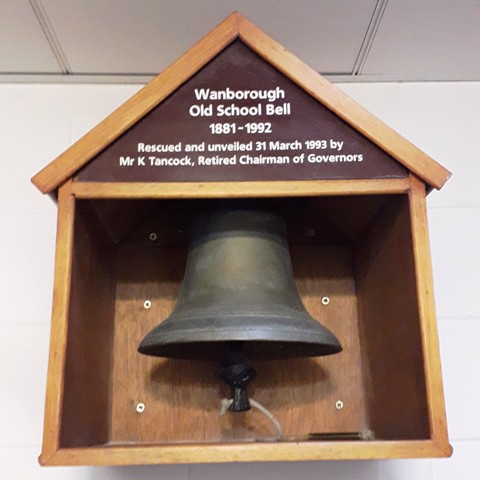A History Of Education in Wanborough
An account on www.british-history.ac.uk mentions 2 schoolmasters living in the parish in the 17th century, but the extent or place of their operations are unknown and as any education had to be paid for, it was unlikely to be widespread. In fact, one of the schoolmasters was described as "very poor", leading one to guess he didn't have many pupils!
The first mention of a school in Wanborough came in 1819 in A Digest of Returns to The Committee of Education of the Poor. This reported a Sunday School of 150 children, but this operated with voluntary contributions and so struggled. In 1833 there were 2 day schools and a Sunday school in the parish. The day schools catered for 65 children whose parents paid for the privilege. The Sunday school was paid by subscription, and there is record of Magdalen College paying this in 1844. Magdalen College also paid a grant of £50 which allowed the Vicar and Churchwardens (acting as trustees) to acquire a site for a school in 1852. It was to be run with continued support from Magdalen College and the Church of England National Society. In 1858 there was a report that stated it was being successfully run, and in 1859 there were 50 pupils, a certificated master and a pupil teacher. (All the above information from www.british-history.ac.uk ).
In 1870 The Elementary Education Act was passed. This made education compulsory for children from 5 to 10. In 1893 this became 11, and there is record that in 1903-4 the school had 201 places with an average attendance of 90 (figures gathered by authors of www.british-history.ac.uk ). This was not the only school in Wanborough. There is some evidence of a privately-run Dame School at Dolphin Cottages around 1910.
Secondary education was a luxury for the rich (although the 1870 Education Act did make some provision for continuation of education until the age of 13). This changed after the First World War when the school leaving age was raised to 14, with some part time continuation classes available for those aged 14-18 in work. However, a large proportion of secondary education was fee paying right up until 1944, particularly the grammar schools who would allow children who had not passed the 11 plus to attend if they were paid for. (My Mother was offered a place at a grammar school but her Father would not pay for it so she attended a technical school instead).
In 1944 the school leaving age was raised to 15, and fee paying was abolished in council run schools. Wanborough children normally went to secondary school in Wroughton at The Ridgeway, and those who passed the 11 plus exam went to Commonweal in Swindon. Commonweal joined the Comprehensive School System in 1965, becoming a senior high school, as Swindon adopted a system with middle schools for children up to 14, and high schools thereafter. I remember this well as I was one of the last intakes to Commonweal as an 11 plus pupil, and stayed as one of the youngest pupils for 3 years as the following years' intakes were 14-year olds. Whichever secondary school they attended; children found themselves having to stay until they were 16 from 1972 onwards.
Meanwhile Wanborough Primary School flourished. In 1962, Liddington school was closed and the children from Liddington were bussed to Wanborough, swelling its numbers to the 120s. I can remember catching the bus from outside Liddington Post Office to go to Wanborough School between April 1963 and July 1964. The School at that time had 4 classrooms, 2 in huts which were the Infant classes, and the main room in the old school building, was divided into 2 junior classes. The reception infants' class was run by Mrs Davies, and there was another teacher, who's name escapes me, who took the older infants. Mrs Adams had the younger Juniors and the oldest were taken by Mr Davies, the head teacher, with Mrs Whiting who came in on a part time basis. The building was horrendous to work in by modern standards, the huts were old and must have been cold. The dining room was also a hut and the junior toilets, which were across the yard, were always smelly and (horror of horrors) had spiders! In spite of this my overriding memory was of having the happiest years of my school life at Wanborough.
In 1991 the new primary school building, on The Beanlands, was opened and
the Old School closed. The old school bell was rescued from the old school
building and now resides in the foyer of the new school.

.
Barbara Kersey (nee Basevi)

